When meeting with consulting clients, many professionals naturally feel comfortable getting down to business by heading straight to crunching numbers, going through reports, etc. This approach may seem logical, but it’s not always the best approach for relationship building.
What many professionals might consider a confident tone may come across as overbearing or even intimidating to a client. To avoid risking a client leaving a meeting feeling frustrated or worse, discontented with the person who is supposed to be his or her trusted advisor, there are several approaches worth paying attention to. These approaches help allow you to explore the client’s concerns and develop solutions specific to each client’s needs, enhancing the relationship. Becoming more consultative may prove challenging because it requires resisting the temptation to focus on being analytic or technical.
- Do your homework first. Doing your homework first, before the client meeting, will help you be more prepared to ask appropriate questions. Even if you have extensive experience in a particular industry or sector, do some research on your client to reaffirm your understanding of the client’s history, customers, goals and competition.
- Listen before you talk. Because each client is unique and circumstances change, take care to not assume you know a client’s challenges or motivations.
- Learn about your clients’ vision of the future. Ask clients where they visualize their business to be one, five, or ten years into the future. Whether the discussion centers on sales, succession planning, or diversification, having this information allows you to provide relevant advice that will help clients realize their vision.
- Provide anecdotes and examples. Always try to relate your message specifically to your clients through conversation and with a storytelling approach. Describe similar situations and offer examples of how others handled situations successfully.
- Offer to work with other advisors. To provide the best possible services, partnerships could reasonably extend beyond your sole interaction with clients. Ask questions about their lawyer or financial planner and offer to work with them, if needed, on behalf of your clients.
- Save your clients time and effort. Like you, your clients are busy. Focus on solutions and recommendations for your clients that will save them time and money. Offering advice on ways they might lower expenses or increase ROI will go a long way in building a relationship and increasing trust.
- Use technology. Help clients increase productivity by using technology to run their business or manage simple tasks, such as organizing an electronic calendar. Consider recommending web portals or applications (apps) when offering time-saving advice. Plan on taking time during your client meeting to demonstrate how web portals work, or recommend certain apps for an iPad or smartphone. Preparing at-a-glance technology handouts for clients to review later at their home or office also may help.
- Build a team approach. Offer your clients an alternative contact if you’re not available and there’s an urgent matter that needs to be addressed. If you don’t employ any staff, consider forming this backup contact arrangement with a local financial planner or insurance agent; a professional who offers services that complement yours. The practice of building a team approach will help improve customer service, increase timeliness of response to urgent client requests, and give clients a sense of continuity.
- Find out how clients prefer to be contacted. While some clients may like e-mail, others prefer a telephone call instead. Don’t make assumptions; rather, ask your clients how they prefer to be contacted. Make note of their preferences in their file and do as they prefer. If you prefer one over the other, ask for their approval to be contacted by phone or e-mail, whichever you prefer.
- Follow up. After a client meeting, make it a practice to follow up with clients to thank them for their time. This relationship-building exercise is also an opportunity to share any additional information that was indicated as a follow-up item during the meeting.
Taking a consultative approach focuses on asking questions, actively listening, and providing advice based on clients’ specific needs, rather than focusing solely on the services you offer. Adopting this approach may require you to change how client meetings are managed, but ultimately, the payoff will result in strengthened client relationships.



